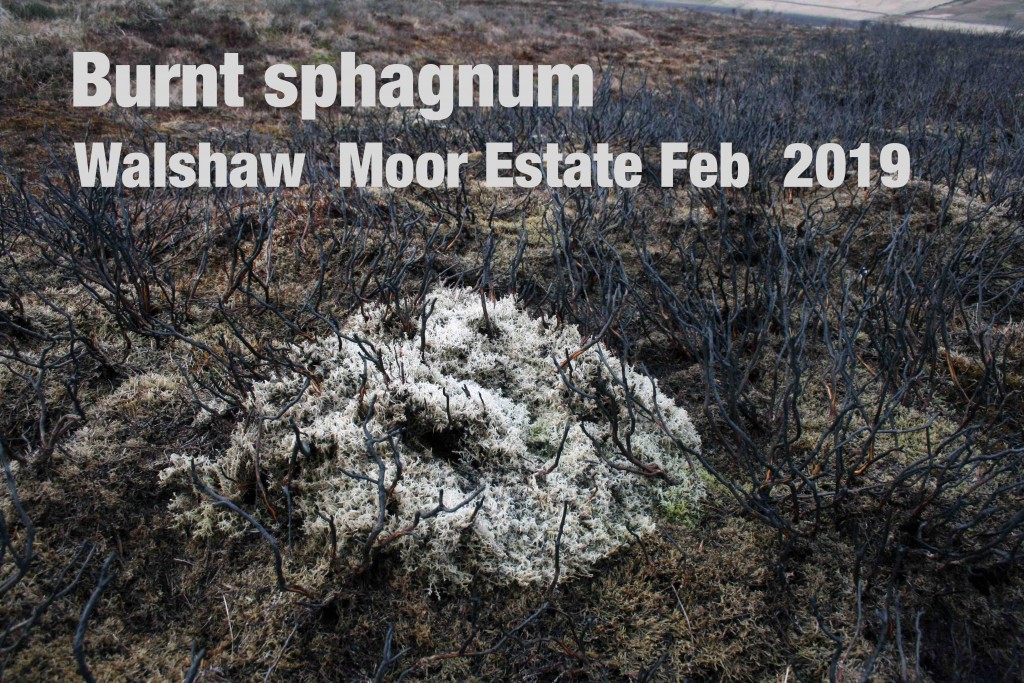• Grouse moor burning is now banned on blanket bog
• The burning season started on 1st October and runs until 15th April
• Please report all burning you see to Valerie.Wheeler@RSPB.org.uk – if possible with photos, videos and location info.
Grouse estates burn the moors to engineer optimal breeding habitat for red grouse – for their own profit.
A recent RSPB blog post reports that in June 2019, Natural England revoked agreements for grouse moors to burn over blanket bog.
We need to keep an eye out on the moors to see if the landowners respect this limitation on burning.
As a result of this new ban on burning over blanket bogs, grouse shooting estates should in theory stop burning most of the moors. They should limit any burning to the small areas where heathland or grassland are the main habitat.
On most estates the habitat is entirely blanket bog, so this is not an option.
You can take a look at the different habitats on your local moors using Natural England’s Magic Map (select ‘Habitats and species’ on the tool bar to the left – blanket bog is marked on the map in a light pink blocks).
Please report all burning you see to the RSPB – and copy in Ban the Burn too
Please be on alert for estates ignoring the burning restrictions and going full swing. The best way to do this is to head out onto the moors on warm, clear and dry days when there is little wind to look for burning.
Gamekeepers will be watching the weather forecast and BBC Weather gives a handy fortnight oversight.
The RSPB will be collating reports of burning – so please submit photos, videos and a description of the location to Valerie Wheeler – Valerie.Wheeler@RSPB.org.uk
If you spot burning on an estate, either in progress or recent, please take clear photographs and video footage showing the location and surrounding landmarks. Make a note of the GPS location or a Grid Reference – having these in shot on a video or photo can be helpful too. If you get right up to the burnt site check for burnt sphagnum moss (white skeletal vegetation).

You can use a gardening cane sunk into the ground to check if a site is deep peat.
Mark 40cm on a gardening cane with a bit of tape (so the cane needs to be 50cm or so). Photograph the cane in the ground. This is just a back up and for your interest.
If you consistently fail to measure 40cm its unlikely to be blanket bog but still worth recording. RSPB have a blanket bog map not available to the public and will want to record all burns in mapped areas.
If you have an app or gps unit they want to record the locations of 4 corners of an area of burns and approx number of burns on that area. Plus a few photos.
Otherwise they want your best estimate of a six figure grid ref so if you have one, take a map.
Reports like “burning on Haworth moor” give a good indication but it’s difficult to find the locations a few weeks later.
All last years confirmed burns were reported to DEFRA with the aim of pressuring them to make blanket bog burning illegal.
Lots of local residents and visitors to moors also post reports, photos and videos of burning on social media, so it’s worth keeping an eye out.
Ban the Burn have just received some interesting info from Natural England about investigating unconsented burns, ditches and track on Walshaw Moor Estate, that we reported to them in the summer. We will update with more info shortly.
What impact will Natural England’s revocation of burning agreements have on grouse moors?
Grouse moors are already struggling because of two years of poor grouse breeding. Since 2017 they’ve been unable to hold many, if any, shoot days. Last burning season, which finished in April, saw a literal bonfire on the moors because many estates conducted burning every available day.
This was undoubtedly because they knew that Natural England was going to revoke burning agreements in June.
These new controls on burning will undoubtedly make estates even more unviable, struggling to breed enough grouse to continue shooting.
To quote Richard Banister, owner of Walshaw Moor Estate,
“If we couldn’t burn the heather, the estate would cease to be a grouse moor.”
The new controls on burning come with other changes to moorland management:
- Restrictions on trapping and killing of corvids are still in place on grouse moors following changes to General Licences.
- Fenn traps are set to be replaced with costly and largely-ineffective DOC traps from next year, meaning the number of traps and stoats and weasels being killed is likely to significantly reduce.
- Increased monitoring and awareness is forcing gamekeepers to abandon poisoning and trapping birds of prey. This leaves them reliant on resource-intensive shooting.
- Moorland monitoring is forcing gamekeepers to reduce or abandon altogether snaring.
- A disease brought on by industrialisation and poor biosecurity, bulgy eye now infects grouse stocks on 50 – 80% of all grouse moors.
- Land being removed from grouse shooting hands and restored for wildlife is increasing the presence of animals which should be there, but predate on grouse on neighbouring grouse moors.
Unlike many areas where grouse shooting estates do break laws because of secrecy, it is very hard for them to hide the large plumes of smoke and damage to land generated by burning.
Thanks to Luke Steele of Stop the Shoot for this info.

Pingback: Vote remain! EU Commission has started legal process against UK government for conservation breaches on Walshaw Moor Estate | Upper Calder Valley Plain Speaker